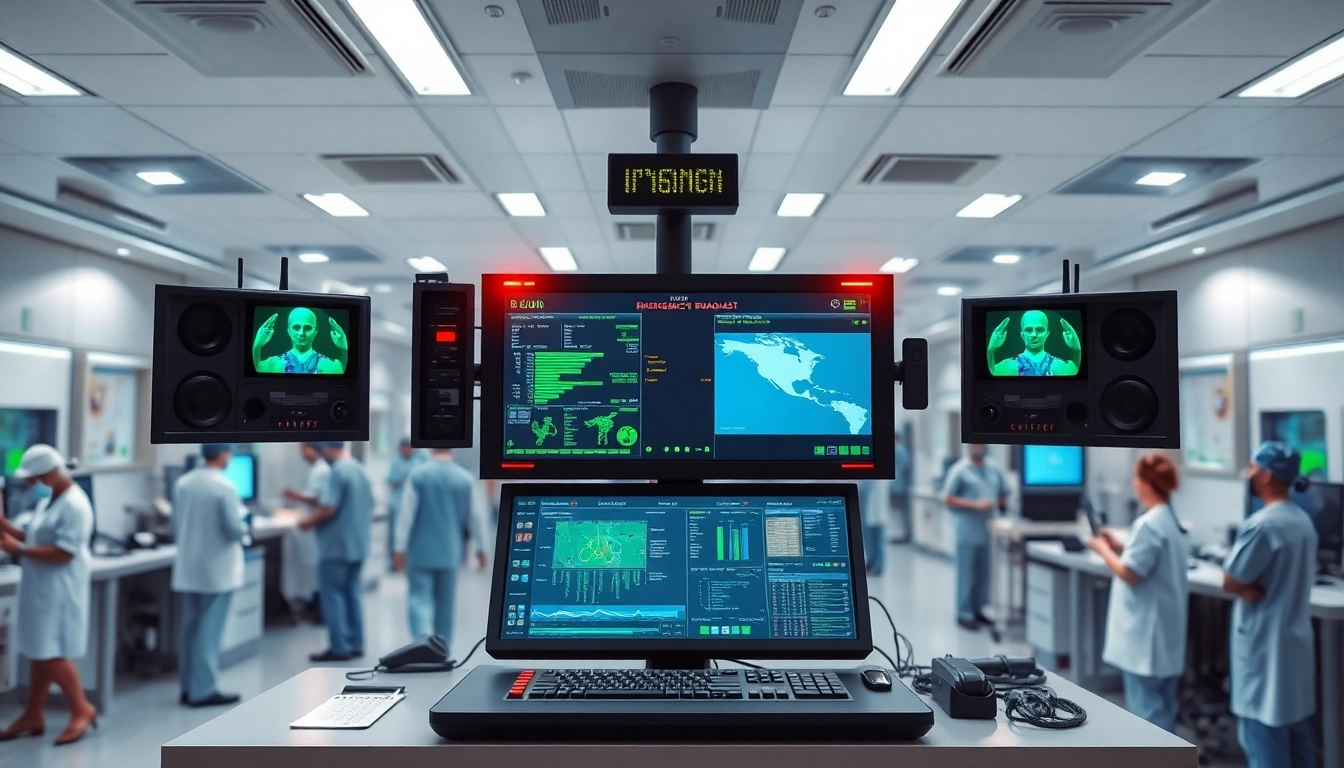Understanding the Campuses & Hospitals Emergency Broadcast System
What is an Emergency Broadcast System?
An Emergency Broadcast System (EBS) serves as a crucial communication network designed to disseminate vital information during emergencies. This technology provides an authoritative channel for conveying notifications, alerts, and instructions that ensure public safety and order. In healthcare settings like hospitals and campuses, the EBS becomes a critical tool in managing emergencies ranging from natural disasters to critical situations such as active shooter incidents. By enabling real-time alerts, the EBS empowers healthcare institutions to respond swiftly and effectively to protect patients, staff, and visitors alike.
Importance of Emergency Communication in Healthcare
In healthcare facilities, the stakes are incredibly high when it comes to effective communication during emergencies. The need for a reliable Campuses & Hospitals Emergency Broadcast System is accentuated by several factors:
- Patient Safety: During emergencies, fast and clear communication can save lives. Alerts to evacuate, lockdown, or initiate emergency protocols help ensure the safety of patients who might be otherwise unaware of imminent threats.
- Staff Coordination: Healthcare professionals must act quickly and coherently during any emergency. An effective broadcast system facilitates the coordination required to manage various responses and ensures that everyone understands their role in the situation.
- Regulatory Compliance: Many healthcare organizations are required by law to have emergency communication systems in place. Compliance with such regulations is crucial to avoid penalties and ensure that patient care standards are upheld.
Components of a Comprehensive Broadcast System
A well-structured Emergency Broadcast System comprises multiple components that work in unison to ensure effective communication:
- Notification Interfaces: These can include text alerts, voice messages, visual displays, and even social media announcements that reach a diverse audience swiftly.
- Centralized Control Panel: This interface allows designated personnel to manage the system, issue alerts, and oversee the entire communication process in real-time.
- Compliance and Reporting Tools: These tools help track the effectiveness of alerts and ensure that the system meets regulatory standards.
- Integration Capabilities: Compatibility with other emergency systems, such as fire alarms and security systems, can enhance the overall efficacy of the broadcast.
Key Features of Campuses & Hospitals Emergency Broadcast System
Real-time Notifications and Alerts
One of the standout features of a successful Emergency Broadcast System is its ability to send real-time notifications. In a situation where seconds matter, the capacity to deliver immediate alerts and instructions could mean the difference between chaos and organized response. These notifications can include orders to evacuate, anchor locations for safety, and even updates on ongoing threats, ensuring that everyone stays informed and safe.
User-friendly Interfaces for Staff
An effective Emergency Broadcast System must have user-friendly interfaces that allow staff members to issue alerts and updates quickly, even under pressure. Intuitive designs reduce the cognitive load during emergencies, allowing staff to focus on their responsibilities without navigating complex tools. This accessibility often translates to quicker response times and a more coordinated effort in managing the situation.
Integration with Existing Communication Systems
Integration is vital for maximizing the broadcast system’s impact. A well-designed Emergency Broadcast System will seamlessly connect with existing communication platforms, such as hospital paging systems, digital signage, email platforms, and even social media. This interoperability helps ensure that emergency messages reach stakeholders across multiple channels, increasing the likelihood that they will be seen and acted upon.
Implementation Strategies for Effective Usage
Planning and Infrastructure Assessment
Successful implementation of a Campuses & Hospitals Emergency Broadcast System begins with thorough planning and careful assessment of existing infrastructure. Stakeholders should engage in detailed evaluations to identify current communication shortcomings and determine the best solutions for specific environments. This process often involves collaboration with local authorities and experts in emergency management to ensure compliance with safety regulations and standards.
Training Staff on the Emergency Broadcast System
Even the most advanced technology is rendered ineffective if staff members do not know how to use it. Offering comprehensive training programs helps ensure that all personnel understand the broadcast system’s capabilities and features. Regular drills and simulations can enhance readiness, enabling staff to respond effectively under pressure. Additionally, maintaining ongoing training and refreshers can help to keep the protocols top of mind for all employees.
Regular Testing and Maintenance Procedures
Routine maintenance and testing of the Emergency Broadcast System are imperative to guarantee its reliability in critical moments. Establishing a regular schedule for testing alerts and communications ensures that all components function as intended. During testing, organizations can identify potential issues and resolve them proactively, thereby increasing the system’s resilience and reliability in actual emergencies.
Maximizing Impact and Efficiency
Establishing Clear Protocols and Procedures
For an Emergency Broadcast System to achieve maximum effectiveness, it is crucial to establish clear protocols and procedures. These guidelines will outline how and when alerts should be issued, as well as the specific roles of various personnel during an emergency. By documenting these processes, organizations can ensure consistent and effective responses, even when staff members may not be familiar with all details of the emergency plan.
Measuring Response Times and Effectiveness
To quantify the efficiency of emergency responses, organizations should implement metrics and analytics to measure response times and the effectiveness of communication during incidents. Establishing benchmarks allows for ongoing evaluation and improvement of the Emergency Broadcast System, ensuring that adjustments can be made based on real-world performance data. Regularly reviewing these metrics helps identify areas for improvement and drives innovation in communication strategies.
Gathering Feedback for Continuous Improvement
After an emergency incident, it’s valuable to gather feedback from both staff and patients regarding the effectiveness of the Emergency Broadcast System. Surveys, interviews, and debriefing sessions can provide insights that significantly enhance future responses. Continuous improvement hinges on a feedback loop that allows organizations to refine protocols and update training accordingly, ensuring better preparedness for subsequent emergencies.
Future Trends in Emergency Communication Systems
Technological Innovations on the Horizon
The landscape of emergency communication is rapidly evolving. Innovations such as artificial intelligence (AI), machine learning, and advanced data analytics hold the potential to transform how Emergency Broadcast Systems operate. Future systems may utilize predictive analytics to anticipate emergencies and optimize response times or harness AI to customize alerts for particular audiences based on their needs or locations.
Adapting to New Challenges in Healthcare
As healthcare environments evolve, so too must the Emergency Broadcast Systems that serve them. These systems must be adaptable in response to unique challenges such as cybersecurity threats, demographic shifts, and the integration of telehealth practices. By adopting a proactive stance and investing in flexible communication solutions, healthcare organizations can prepare for whatever obstacles lie ahead.
Building Resilience through Enhanced Communication
Ultimately, the aim of a Campuses & Hospitals Emergency Broadcast System is to bolster the resilience of healthcare institutions during crises. By facilitating timely, clear communication, organizations can not only protect the immediate safety of patients and staff but also strengthen the overall integrity of their emergency response systems. Investing in these systems is not merely about adhering to regulations but also about establishing a culture of preparedness that reinforces the mission of healthcare providers.


